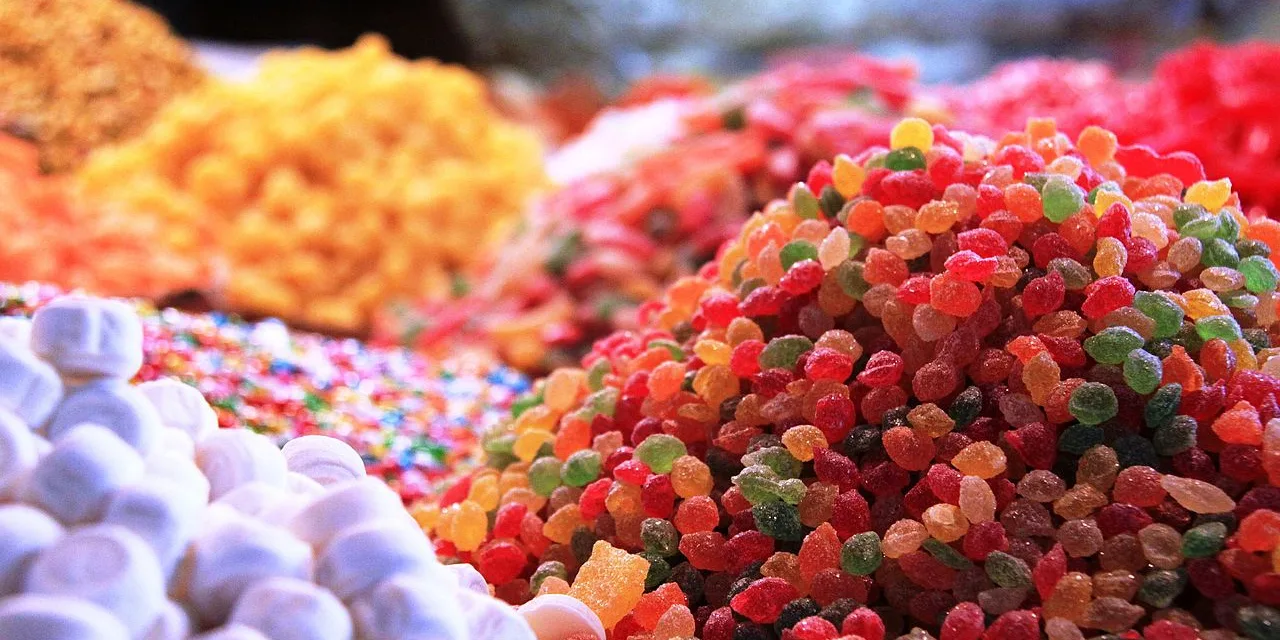Candy, also called sweets (British English) or lollies (Australian English, New Zealand English), is a confection that features sugar as a principal ingredient. The category, called sugar confectionery, encompasses any sweet confection, including chocolate, chewing gum, and sugar candy. Vegetables, fruit, or nuts which have been glazed and coated with sugar are said to be candied.
Physically, candy is characterized by the use of a significant amount of sugar or sugar substitutes. Unlike a cake or loaf of bread that would be shared among many people, candies are usually made in smaller pieces. However, the definition of candy also depends upon how people treat the food. Unlike sweet pastries served for a dessert course at the end of a meal, candies are normally eaten casually, often with the fingers, as a snack between meals. Each culture has its own ideas of what constitutes candy rather than dessert. The same food may be a candy in one culture and a dessert in another.
Sugarcane is indigenous to tropical South and Southeast Asia. Pieces of sugar were produced by boiling sugarcane juice in ancient India and consumed as khanda. Between the 6th and 4th centuries BCE, the Persians, followed by the Greeks, discovered the people in India and their “reeds that produce honey without bees”. They adopted and then spread sugar and sugarcane agriculture.
Before sugar was readily available, candy was based on honey. Honey was used in Ancient China, the Middle East, Egypt, Greece and the Roman Empire to coat fruits and flowers to preserve them or to create forms of candy. Candy is still served in this form today, though now it is more typically seen as a type of garnish.
Before the Industrial Revolution, candy was often considered a form of medicine, either used to calm the digestive system or cool a sore throat. In the Middle Ages candy appeared on the tables of only the most wealthy at first. At that time, it began as a combination of spices and sugar used as an aid to digestion. Banquet hosts typically served these types of ‘candies’ at banquets for their guests. One of these candies, sometimes called chamber spice, was made with cloves, ginger, aniseed, juniper berries, almonds and pine kernels dipped in melted sugar.
The Middle English word candy began to be used in the late 13th century.
The first candy came to America during the early 18th century from Britain and France. Only a few of the early colonists were proficient in sugar work and sugary treats were generally only enjoyed by the very wealthy. Even the simplest form of candy – rock candy, made from crystallized sugar – was considered a luxury.
Image and Info from Wikipedia






Recent Comments